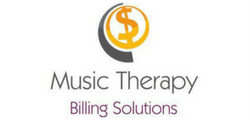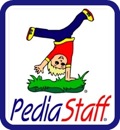Have you ever attended a seminar or workshop that got you so excited about something you wanted to start working right away, even though you just spent over 9 hours sitting, listening, and taking notes?
I just did.
If you follow me on Twitter or are a fan of Neurosong on Facebook, you know that I attended a two-day workshop this weekend called “Linking Neuroscience to Clinical Practice.” The speaker was Dr. Martha Burns, a Speech-Language Pathologist (SLP) in the Chicago-area who teaches at Northwestern, has a private practice, and conducts these workshops and talks all over the country.
The workshop was fantastic! My brain is just full of information and I am busting at the seams to share it with you.
This article is the first in a 2-part series where I will share over 70 ideas, facts, and resources from the “Linking Neuroscience” workshop that I feel may benefit you. My hope is that this information will provide you with some resources and new ideas to get you thinking about what you do, why you do it, and how you can do it better.
If you’re signed up for my email newsletter, you’ve already received this article. Be aware, too, that there are no detailed explanations. So if you have questions, be sure to contact me.
(As a side note, if you ever have the opportunity to hear Martha speak, DO! She is engaging, dynamic, and knows her stuff. It was an incredibly stimulating and enjoyable workshop.)
Enjoy!
71 Fun Facts About the Brain (part 1)
- Exercise your working memory to increase your IQ and build brain structures.
- Subscribe to a “Nature Reviews” journal (www.nature.com/reviews). Topics include: Neuroscience, Neurology, Cancer, Clinical Oncology, et al.
- In 5-10 years, fMRIs will be used as a diagnostic tool, not just a research tool.
- The natural maturation of the brain continues into the 40s.
- Practicing a skill increases myelination which improves the efficiency.
- Myelin thins as we age because 1) we do not exercise our brain (physically or cognitively) and 2) metabolism is not as efficient.
- Fasciculi (the “superhighways”) connect functional networks in the brain. The architecture for these superhighways are laid during the critical developmental periods–mostly in the first 3 years of life.
- Basic neurodevelopment: 1) Creates superhighways (builds connections between networks) then 2) Paves them (builds myelin for efficiency and speed)
- Therapy forces a person to do what they can’t do. The unaffected brain areas send out chemical signals which recruit neurons from other areas to repair the network. This works to re-wire the brain, forcing it to recover the skill they “can’t” do.
- Rehabilitation is not about “time” to recover. It’s about “residual function”–is there enough of it to force the brain to re-wire?
- The Mirror Neuron system allow the brain to organize itself by watching others. Mirror neurons fire whether you do the task (e.g. throw a ball) or whether you watch someone else do it.
- Therapy is a two step process: 1) you stimulate the brain to make new connections and recruit new networks (which only a human therapist can do), 2) you practice the new skill (this builds myelin and improves efficiency and speed. A machine can help you practice.)
- Visualization is a type of top-down processing. Doing something (e.g. experiencing it) is a type of bottom-up processing.
- The brain develops from right to left and from back to front.
- Mirror neurons are the reason we will never be able to replace a human therapist.
- Practicing a new skill learned in therapy only works if the patient practices it “correctly.”
- In the field of neuroscience, anything discovered before 2002 is considered “historical.”
- Neurotransmitters–the “how” of therapy.
- Therapy involves changing these 3 neurotransmitters: 1) dopamine (involved in motivation and making new connections “stick”), 2) acetylcholine (makes the client pay attention to you), 3) norepinephrine (works to make new connections)
- A therapist’s job: tell the client what to do, tell them how to do it, keep them doing it.
- The brain is a “use it or lose it” organ. Keep practicing.
- A newborn’s brain is 1/3 the size of an adult brain. The other 2/3 will be based on connections (the “superhighways” or synapses).
- The brain develops based on experience. What we expose children to affects their brains forever.
- The orbitofrontal cortex (OFC) is impaired in children with autism and in children who have been abused and neglected.
- Males are more vulnerable to learning disorders because the neurons responsible for learning are moving (“migrating”) to the left hemisphere at the same time that male genitalia develops. The testosterone involved can affect where those neurons migrate to.
- We have 23 chromosomes. Each chromosome has approx. 1,000 genes. You do the math.
- Attention-Deficit/Hyperactivity Disorder (ADHD) is a developmental issue, not a disease that can be cured by drugs.
- Every therapist has a responsibility to educate clients on the importance of diet and exercise.
- Epigenetics = a fascinating field that studies environmental influences that turn genes on and off.
- Physical exercise releases Brain-Derived Neurotrophic Factor (BDNF). Just 4 hours of moderate exercise a week will release enough of this hormone to keep your brain growing and plastic.
- There is nothing worse on the developing brain than limiting experience.
- The recipe for a healthy developing brain? Talk, Sing, Play, Explore to/with the child.
- Music and speech are organized sounds.
- Don’t haphazardly “praise” your clients for their efforts. Limit your praise and rewards to progressive change towards the positive (or towards the goal). Only this will refine their brain.
- Any sensory system can be modified and changed.
Make sure to check back on Thursday for the last 36 points! See you then.


 orcid.org/0000-0001-8665-1493
orcid.org/0000-0001-8665-1493






{ 0 comments… add one now }
You must log in to post a comment.
{ 1 trackback }